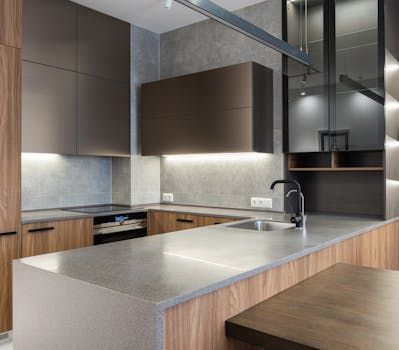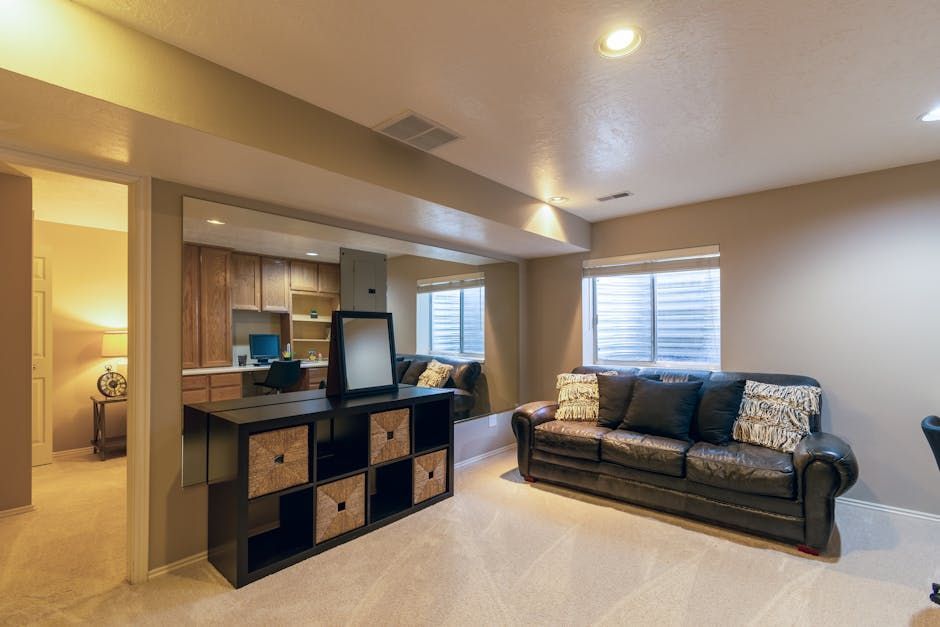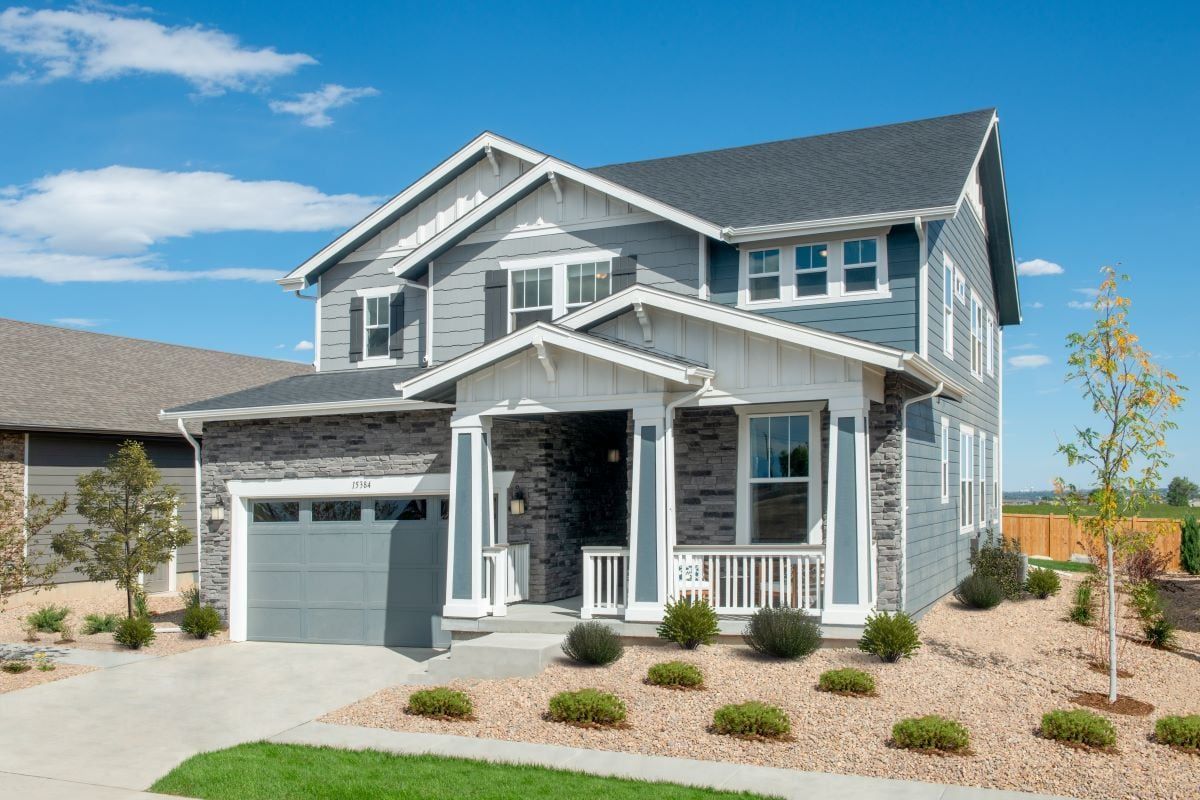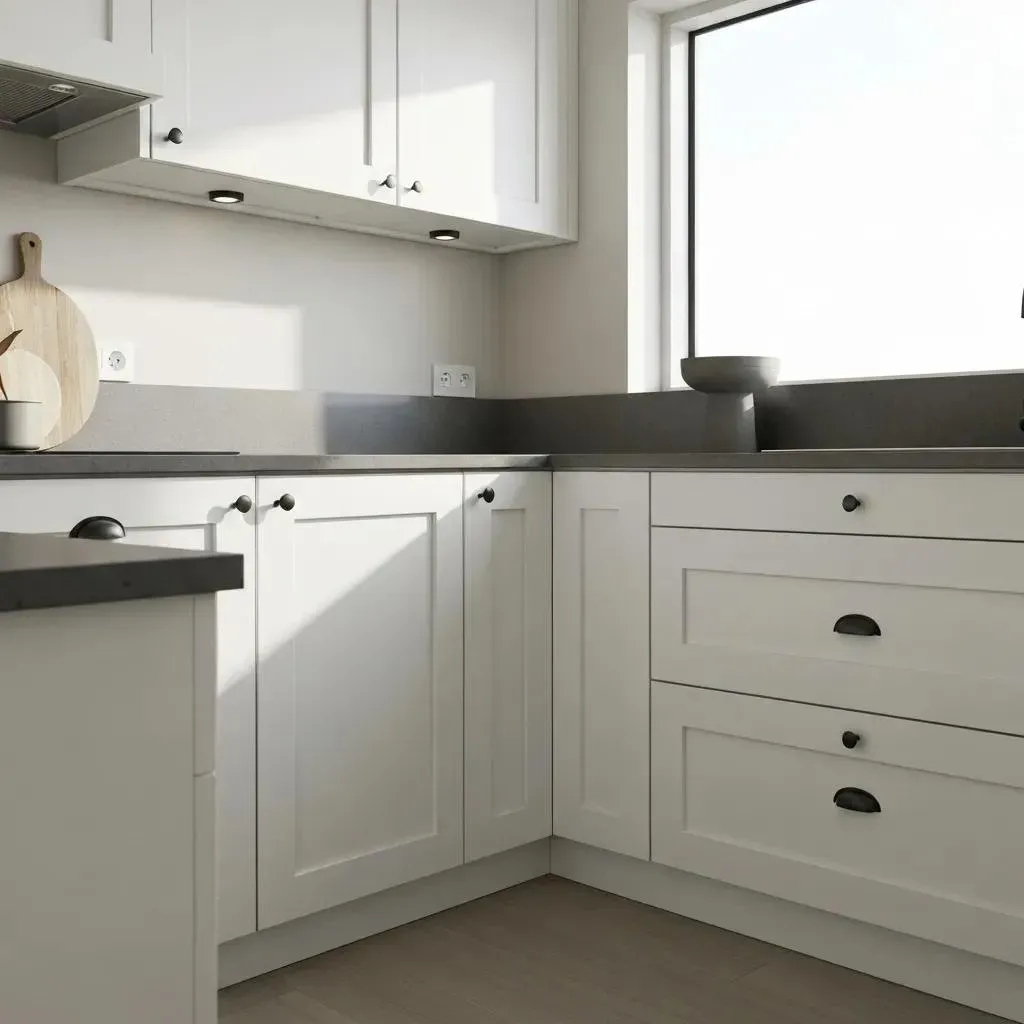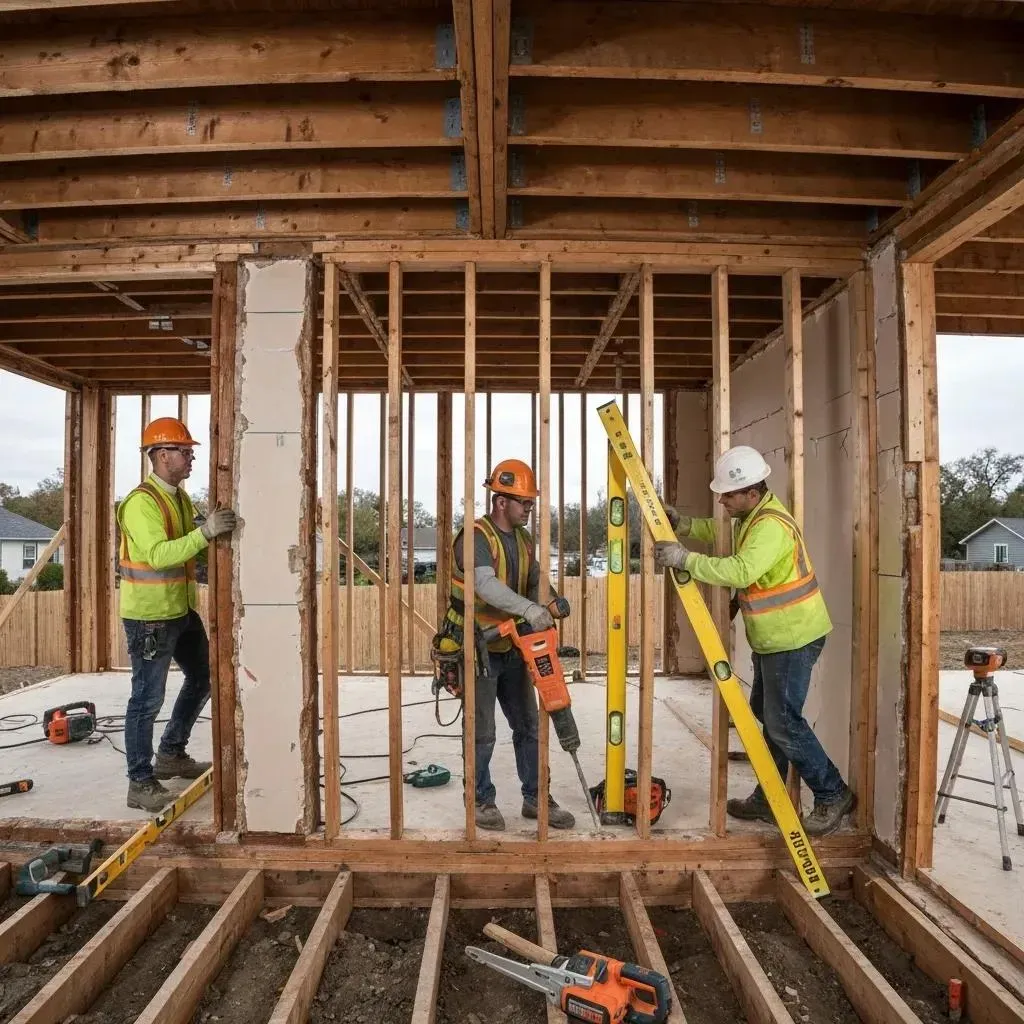Kitchen Lighting Layers | Ambient, Task & Accent Guide
Illuminating Your Kitchen: Ambient, Task & Accent Layering 101 for Brilliant Kitchen Lighting Design
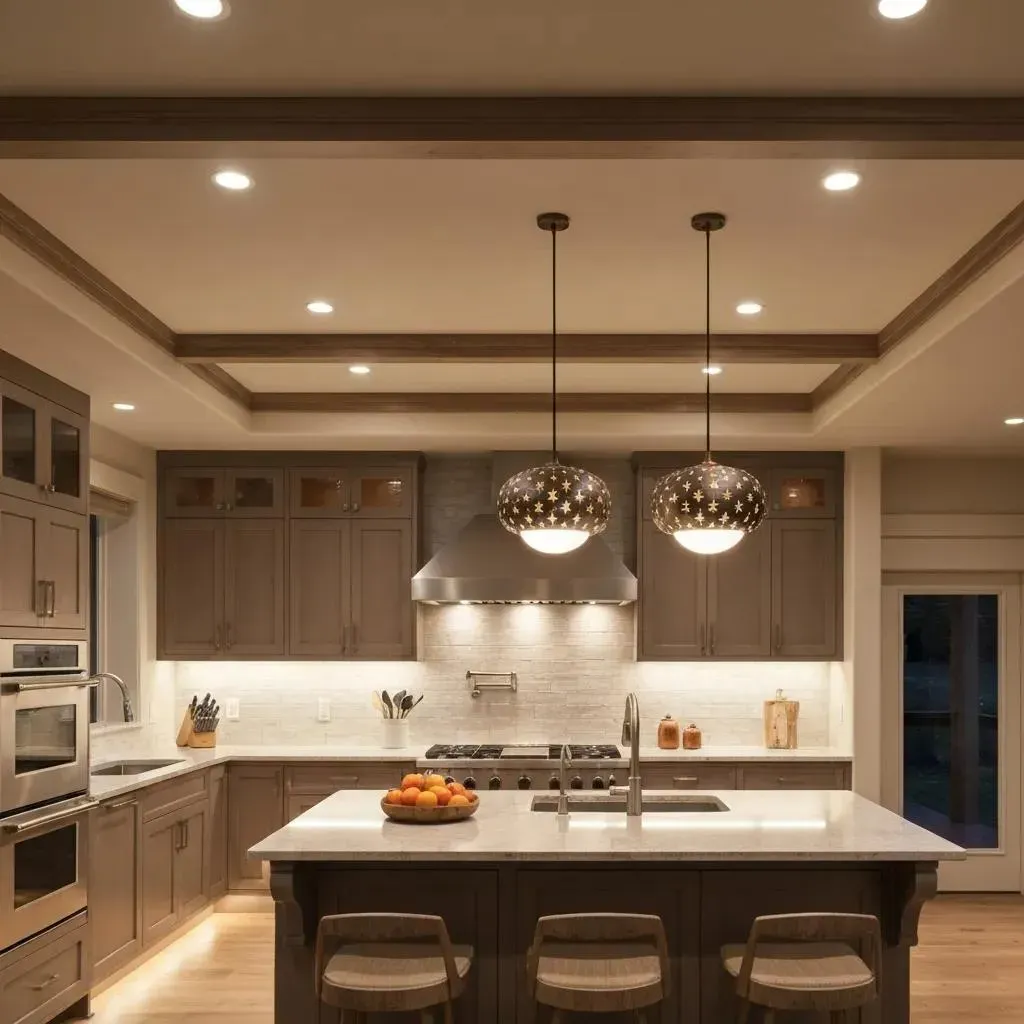
Crafting a brilliantly lit kitchen elevates your daily routines and boosts your home's appeal by harmonizing ambient, task, and accent lighting into a smart, cohesive system. Many Denver homeowners find themselves battling dim corners, uneven brightness, or distracting glare while cooking and hosting. This guide offers practical kitchen lighting design strategies—complete with fixture ideas, layering techniques, and local remodeling insights—to ensure both peak functionality and inviting atmosphere. You'll discover the three essential lighting types, how to integrate dimmers and zones, top fixture recommendations, clever under-cabinet innovations, emerging trends right here in Denver, and when bringing in professional design services truly pays off.
What Are the Three Essential Types of Kitchen Lighting?
Ambient, task, and accent lighting form the bedrock of any efficient and welcoming kitchen, addressing overall illumination, focused work zones, and decorative highlights in perfect concert.
Kitchen Lighting Design Principles
Masterful kitchen lighting design weaves together ambient, task, and accent lighting to amplify both functionality and visual appeal. This thoughtful approach guarantees ample illumination for every activity while cultivating a space that’s a joy to behold.
This reinforces the article's central theme: the critical importance of layering different lighting types for a superior kitchen experience.
What Is Ambient Lighting and Why Is It the Foundation?
Ambient lighting provides consistent, shadow-free illumination for general visibility. It sets the overall brightness level, supporting all kitchen activities and creating a comfortable backdrop for more specialized lighting layers. For instance, recessed LED fixtures strategically placed across the ceiling bathe the room in even light, banishing dark spots and establishing a pleasant baseline brightness.
Before you pick out fixtures, consider your ceiling height, the kitchen's overall size, and the brightness you're aiming for in lumens. Well-executed ambient lighting lays the essential groundwork for accent and task layers by eliminating harsh glare and ensuring visual comfort, paving the way for precisely targeted illumination where you cook and entertain.
How Does Task Lighting Improve Kitchen Functionality?
Task lighting hones in on your key work zones—counters, islands, sinks, and stovetops—to boost precision and safety during meal prep and cleanup. By positioning fixtures directly above these areas, you eliminate distracting shadows that could obscure your chopping board or simmering pots.
Here’s a quick look at common task-lighting fixtures:
| Fixture Type | Key Feature | Ideal Use |
|---|---|---|
| Under-cabinet strips | Sleek profile, consistent light spread | Countertop prep areas and backsplashes |
| Pendant lights | Adjustable height, adds decorative flair | Kitchen islands and breakfast bars |
| Track lighting | Adjustable heads, flexible arrangement | Multi-functional workstations |
Each option delivers focused light precisely where your tasks happen. Under-cabinet LEDs create smooth, even light across your countertops, while pendants add a stylish touch and direct beams precisely over islands. Track systems offer adaptability for evolving kitchen layouts, ensuring optimal task coverage even as your workflow shifts.
What Role Does Accent Lighting Play in Kitchen Design?
Accent lighting draws attention to architectural details, open shelving, artwork, or decorative alcoves, adding depth and captivating visual interest. It creates dramatic highlights and subtle shadows, transforming a purely functional space into a curated showcase.
Common accent fixtures include:
- In-cabinet LED strips that cast a soft glow on glassware
- Toe-kick LEDs installed beneath base cabinets to define perimeter lines
- Wall sconces placed beside built-in niches to create understated focal points
Accent lighting emphasizes your design choices and guides the eye toward custom cabinetry or striking tilework. By skillfully balancing brightness and warmth, accent layers contribute to an inviting kitchen atmosphere that seamlessly blends utility with sophisticated style.
How Do You Layer Kitchen Lighting for Optimal Illumination?
Effective layering masterfully combines general brightness, focused work lights, and decorative accents into a unified lighting plan that adapts effortlessly to various activities and moods.
What Are the Steps to Combine Ambient, Task, and Accent Lighting?
- Map out your kitchen's layout and identify key work zones, including areas for cooking, prepping, and serving.
- Install ambient fixtures—like recessed cans or flush mounts—spaced to deliver approximately 30–40 lumens per square foot.
- Add task fixtures directly above counters, islands, and sinks, ensuring a bright 500–700 lux at your working surfaces.
- Integrate accent elements to highlight specific features, using lower-intensity LEDs or directional spotlights.
- Fine-tune all layers with dimmer switches and scene controls for perfectly tailored brightness levels.
Following these steps creates a dynamic lighting hierarchy that can transition from bright, focused prep lighting to a soft, inviting ambiance for entertaining with just a few adjustments.
Why Are Dimmers and Lighting Controls Important in Layering?
Dimmers and smart controls allow you to regulate each lighting layer independently, offering precise intensity adjustments for cooking, dining, or cleaning. A simple dimmer switch can reduce overhead brightness by 70% for a cozy movie night, while an app-controlled system can instantly trigger high output for intense meal preparation. This flexibility conserves energy, extends bulb life, and customizes your kitchen's ambiance at the touch of a button.
The Role of Dimmers and Lighting Controls
Dimmers and smart lighting controls provide unparalleled flexibility in adjusting light levels, boosting energy efficiency, and crafting personalized ambiances within your kitchen. This advanced technology enables the creation of truly tailored lighting scenes.
This supports the article's strong emphasis on the significant advantages of incorporating dimmers and smart controls into kitchen lighting design.
How Do Lighting Zones Enhance Kitchen Lighting Design?
Dividing your kitchen into distinct illumination zones—such as cooking, prep, dining, and circulation areas—ensures each space receives the precise level of light it requires. Zone separation simplifies wiring, enables targeted control, and prevents unwanted light spillover. For example, grouping island pendants on one circuit and under-cabinet strips on another allows for bright prep lighting while keeping the dining nook softly lit.
What Are the Best Kitchen Lighting Ideas and Fixture Types?
Selecting the perfect fixtures for each lighting layer completes a cohesive kitchen lighting scheme that delivers both exceptional style and outstanding performance.
Which Ambient Lighting Fixtures Work Best in Kitchens?
Ambient fixtures should maximize light coverage and minimize shadows. Top choices include:
- Recessed LED downlights with adjustable trims to direct light precisely where needed
- Flush-mount or semi-flush ceiling fixtures offering decorative diffusion
- Generously sized pendants with layered glass designs, ideal for open-concept kitchens
By selecting fixtures that complement your ceiling height and kitchen décor, ambient lighting achieves both essential function and captivating character.
What Are Effective Task Lighting Solutions for Kitchen Work Areas?
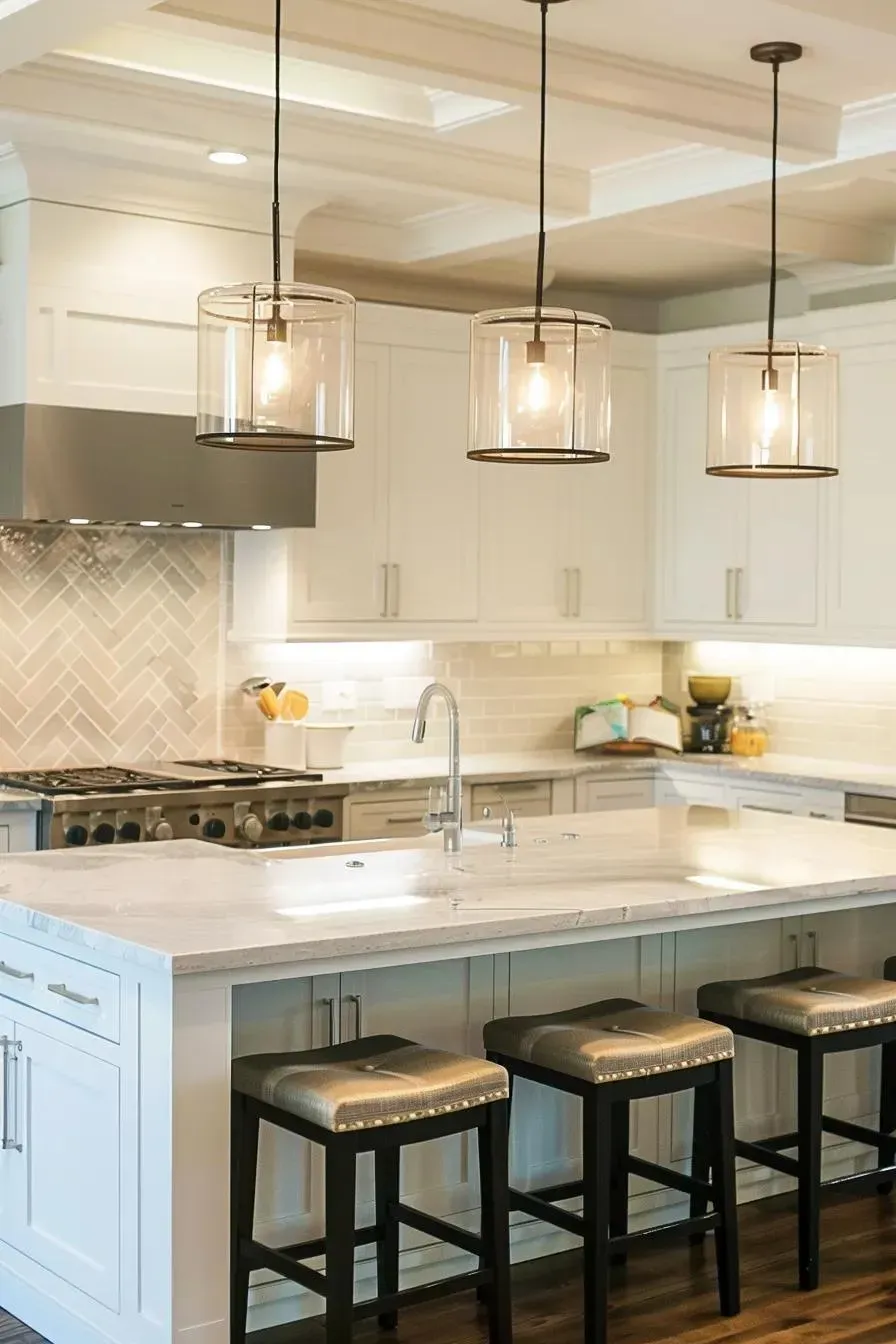
For tasks demanding precision, consider these options:
- Linear LED bars installed beneath wall cabinets for complete countertop illumination
- Adjustable pendants hung over islands to customize beam angles
- Track lights fitted with high-CRI bulbs for exceptionally accurate color rendering
Task lights boasting a high color-rendering index (CRI > 90) ensure your ingredients and surfaces appear true-to-life, significantly enhancing safety and your confidence while cooking.
How Can Accent Lighting Add Style and Depth?
Accent layers artfully refine your kitchen’s visual narrative through:
| Fixture | Purpose | Strategic Placement |
|---|---|---|
| Toe-kick LED strips | Creates a subtle perimeter glow | Under lower cabinets for a floating effect |
| In-cabinet puck lights | Highlights displayed items | Behind glass cabinet doors or on open shelving |
| Wall-mounted picture lights | Illuminates artwork | Above framed art or decorative tile panels |
These accent elements introduce captivating contrast and focal points that enrich your kitchen’s aesthetics while subtly guiding movement through the space.
How Do Under Cabinet Lighting Solutions Enhance Kitchen Lighting?
Under-cabinet lighting masterfully blends task and accent functionality by brilliantly illuminating countertops and highlighting backsplash details.
Under-Cabinet Lighting: A Practical Guide
Under-cabinet lighting dramatically improves task lighting in kitchens, delivering focused illumination directly onto countertops and work surfaces. LED options are particularly recommended for their exceptional energy efficiency and impressive longevity.
What Types of Under Cabinet Lighting Are Available?
Popular under-cabinet options include:
- LED tape strips that provide continuous, seamless illumination
- Puck lights that deliver focused, circular spotlights for specific areas
- Linear bar fixtures featuring integrated diffusers for superior glare control
How Is Under Cabinet Lighting Installed for Maximum Effect?

Mount fixtures 2–4 inches from the backsplash to effectively prevent glare and ensure uniform light coverage. Conceal wiring discreetly behind cabinets and connect to a dedicated circuit, incorporating inline switches or dimmers. Position lights centrally under each cabinet section to eliminate dark spots and maintain consistent, beautiful light across your entire countertop.
What Are the Benefits of LED Under Cabinet Lighting?
| Key Benefit | How It Works | Tangible Value |
|---|---|---|
| Energy efficiency | Low wattage, high lumen output | Significant reduction in electricity costs |
| Exceptional longevity | Durable diodes rated for 50,000+ hours | Minimal maintenance and infrequent replacements |
| Customizable color temperature | Tunable white or RGB options available | Perfectly tailored mood and accent effects |
LED under-cabinet lights significantly outperform older halogen or fluorescent options, offering superior light quality, reduced heat output, and a much longer service life, making them ideal for busy, task-intensive kitchen environments.
What Are the Latest Kitchen Lighting Trends for Denver Homeowners?
Denver kitchens are increasingly embracing smart controls, highly efficient LEDs, and biophilic design principles to create spaces that are healthier, more adaptable, and beautifully integrated with their surroundings.
How Is Smart Kitchen Lighting Transforming Modern Kitchens?
Wi-Fi and Bluetooth connectivity enable sophisticated scene presets, effortless voice activation, and occupancy sensors that automatically adjust brightness as you enter a room. Integration with home-automation platforms synchronizes kitchen lighting with outdoor conditions, seamlessly ramping up cool-white LEDs at dawn to mimic natural light and transitioning to warmer tones for evening gatherings.
Why Is LED Lighting Dominating Kitchen Remodels?
LED technology offers unparalleled versatility in terms of fixture design, light intensity, and color temperature. Its remarkably low energy consumption and extended lifespan make it the sustainable choice for environmentally conscious homeowners. Dimmable LED fixtures maintain high efficiency even at reduced output, ensuring that dimmed settings still provide crisp, clear visibility without any distracting flicker.
How Does Biophilic Design Influence Kitchen Lighting Choices?
Biophilic design emphasizes maximizing natural light and fostering visual connections to the outdoors. Skylights, clerestory windows, and reflective surfaces amplify daylight, while tunable LEDs can precisely simulate the warm hues of sunrise and the cool tones of midday. Encouraging daylight mimicry promotes well-being, reduces eye strain, and beautifully complements kitchens filled with plants, effectively blurring the lines between indoor and outdoor living.
Why Should You Choose Professional Kitchen Lighting Design Services?
Attempting DIY lighting plans can often result in uneven illumination, frustrating glare issues, or even code violations. Professional design ensures that every lighting layer works in perfect harmony while adhering to safety standards and achieving your desired aesthetic goals.
How Does Accountable Home Remodeling Enhance Kitchen Lighting in Denver?
Accountable Home Remodeling excels in comprehensive kitchen renovations throughout the Denver Metro Area, expertly integrating sophisticated lighting design into every project. Our in-house designers conduct thorough site assessments, recommend optimal fixture layouts, and meticulously coordinate electrical planning to guarantee uniform coverage, flawless dimming capabilities, and seamless integration with your cabinetry and architectural features. To discover our full-service approach, visit Accountable Home Remodeling – Denver’s Trusted Remodeling Contractor.
What Are the Benefits of Expert Lighting Design in Kitchen Remodels?
Expert lighting design delivers:
- Optimal light distribution that completely eliminates dark spots and glare.
- Customized control schemes for effortless transitions between different lighting moods.
- Increased resale value thanks to impeccable professional craftsmanship.
Collaborating with seasoned designers ensures your lighting perfectly complements your cabinetry, appliances, and finish selections, resulting in a polished, highly functional kitchen environment.
How Can Professional Installation Ensure Safety and Quality?
Our licensed electricians handle all wiring with strict adherence to code, ensuring proper ground-fault protection near sinks and correctly spacing fixtures above cooktops. This meticulous attention to detail prevents potential electrical hazards and guarantees that each lighting layer meets all building regulations, while also preserving manufacturer warranties and maximizing the lifespan of your fixtures.
What Are the Most Common Questions About Kitchen Lighting?
Homeowners frequently seek clear answers on fundamental lighting parameters to confidently plan successful remodels.
What Are the Three Types of Kitchen Lighting?
The three foundational types are ambient lighting for overall illumination, task lighting for focused work areas, and accent lighting for decorative highlights that enrich both the design and functionality of your kitchen.
How Many Lumens Do You Need for Kitchen Lighting?
Aim for 30–40 lumens per square foot for ambient light, a robust 500–700 lux for task areas, and 50–100 lumens for accent fixtures to achieve a perfect balance between visibility and ambiance.
What Is the Best Color Temperature for Kitchen Lights?
A neutral white (3500–4000 K) is ideal for accurate color rendering during food preparation, while a warm white (2700–3000 K) enhances dining and entertaining ambiance with softer, more inviting tones.
How Do You Brighten a Dark Kitchen with Lighting?
Combine high-output ambient fixtures with effective under-cabinet bars, reflective backsplash materials, and strategically placed accent spotlights to significantly amplify brightness and minimize shadows in areas with limited natural light.
A thoughtfully layered lighting plan will transform your kitchen into a dynamic space that supports precise cooking, beautifully enhances your décor, and adapts seamlessly to every activity. By integrating ambient, task, and accent fixtures with smart controls and professional execution, you'll achieve both stunning style and exceptional functionality. Partner with a trusted Denver remodeler to implement a custom kitchen lighting design that elevates your daily living and significantly boosts your home's value. Schedule your consultation today for a brighter, more efficient kitchen upgrade.


